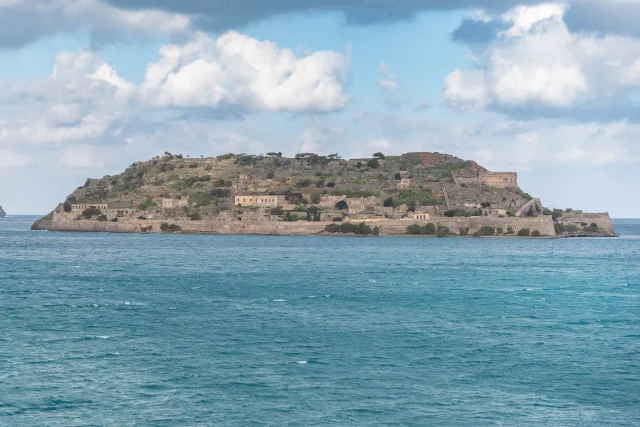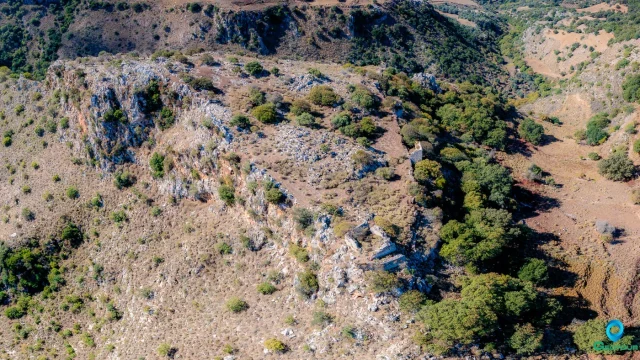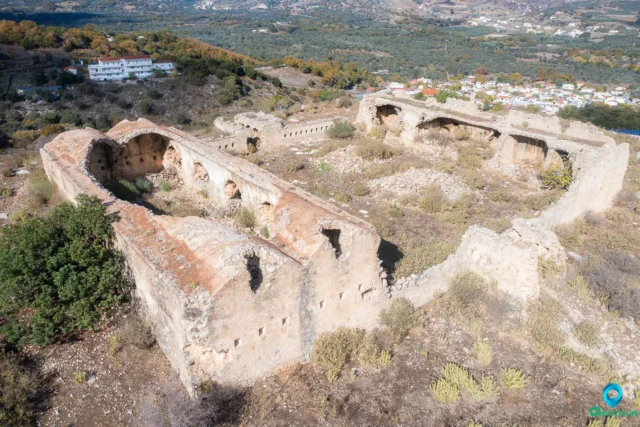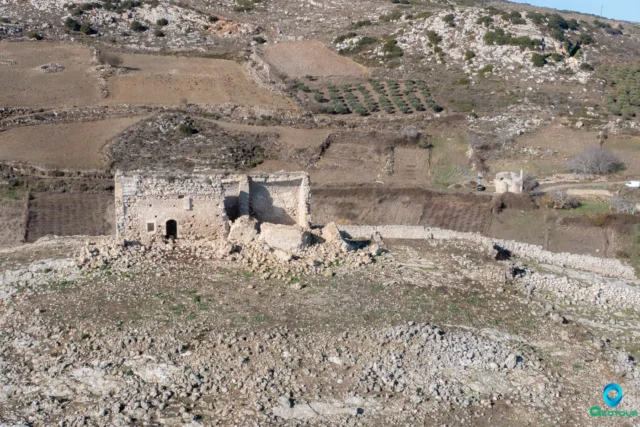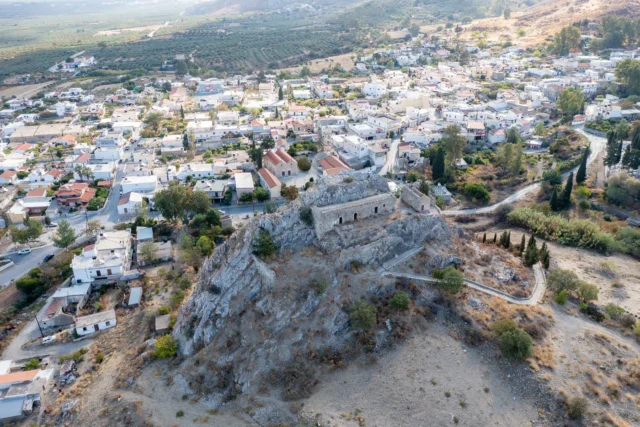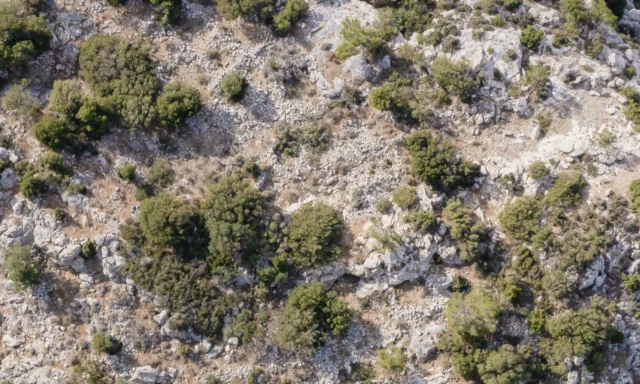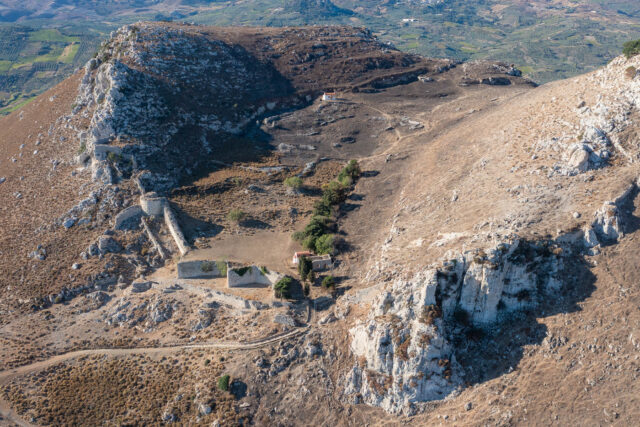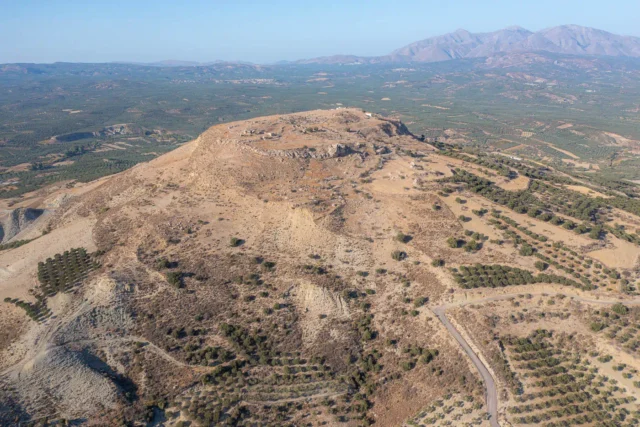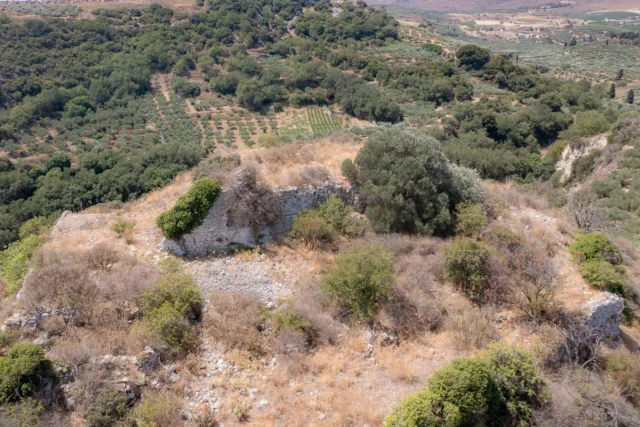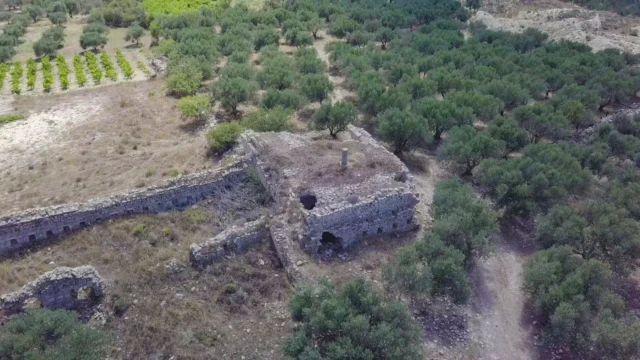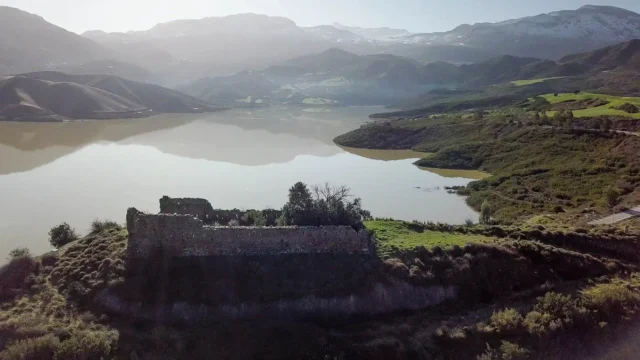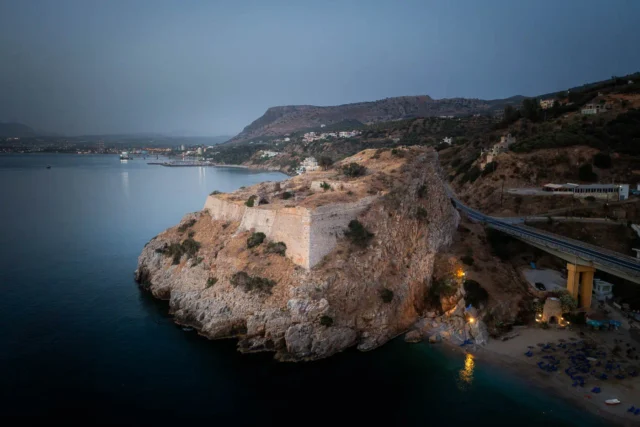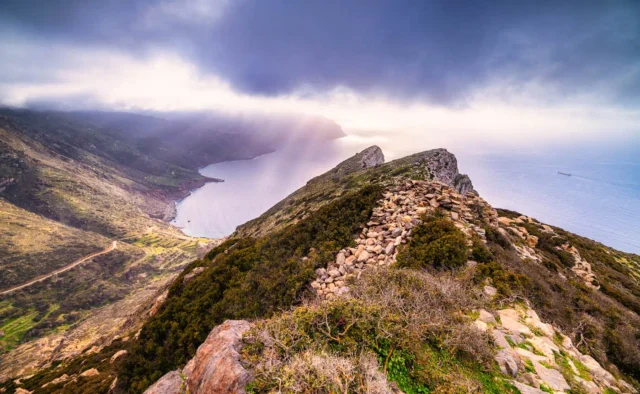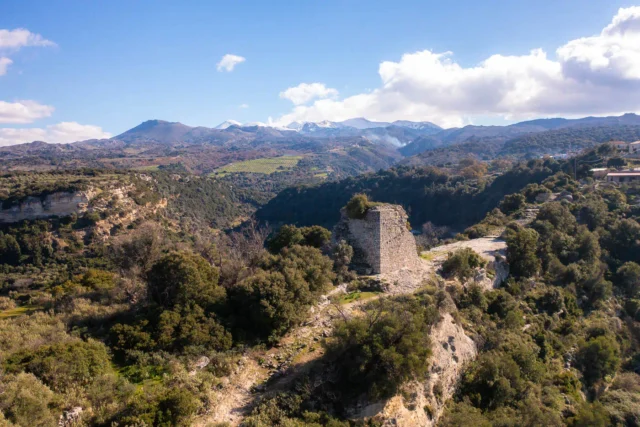25
listings found
Categories
Active filters:
Spinalonga
This rocky islet in the Gulf of Elounda, Lasithi (officially Kalydon), was a Byzantine watchtower linked to ancient Olous. The Venetians built it into a formidable sea fortress (1574-1586) which became their last stronghold, falling in 1715. It then became a thriving Ottoman commercial settlement, the largest Muslim center in the Mirabello region, until 1903. From 1903 to 1957, it was repurposed as a leper colony, a place of exile where patients formed a unique community, notably the "Brotherhood of Patients" (1936). Today, it is a protected archaeological site and on UNESCO's tentative list.
Bonriparo Fortress near Monopari
The Bonriparo fortress, on Kastellos hill near Monopari, is a strategic stronghold 16km south of Rethymno. Its origins are debated: either Genoese by Enrico Pescatore (1206) or from the Second Byzantine Period as the Tower of Melissinos. The Venetians later modified it. The fortress was the catalyst for the major "Revolt of the Two Syvritos" (1217-1236), started by the Skordilis family. It controlled the Amari valley route and formed a defensive network with Syvritos and Kiriakoselia. Its ruins include a two-meter-thick northern wall, a central Byzantine-era tower, and large cisterns.
The Koules of Riza
An Ottoman-era fortification from the 19th century, located east of Ano Viannos. It controlled the strategic Viannos-Pefkos-Kalamio pass, crucial for accessing the Lasithi Plateau. Part of a network of towers designed to suppress local uprisings, it allowed Ottoman garrisons to communicate with Ierapetra. The structure consisted of a 14x7m rectangular building with two 3x4m southern bastions. The ruins are still visible at the site, which also marks where German forces carried out mass executions in September 1943.
The Koules of Koxare
The Koules of Koxare is an Ottoman-era fortress located near Koxare village at the entrance of Kourtaliotiko Gorge in Rethymno Prefecture, Crete. Built between 1866 and 1869, it was part of a network of fortifications designed to control movement and quell rebellions on the island. The Koules is characterized by a large internal courtyard, thick stone walls, and remnants of arched structures. Partially destroyed in 1896 during the Cretan revolution, it stands as a testament to the island's struggle for freedom from Ottoman rule. Despite its deteriorated state, the Koxare Koules remains an important historical landmark with potential for preservation and tourism development.
Tholoi Fortress near Alagni
The Tholoi Fortress, near Alagni, Crete, dates to the 16th-17th century, reflecting Venetian and Ottoman periods. Situated on a hilltop, it served as a strategic point for surveillance and defense. Its design shows Venetian villa influences, with local stone construction. The fortress, now in ruins, experienced damage, including from the 2021 Arkalochori earthquake, but the outer wall remains. Nearby, the 15th-16th century Church of Agioi Apostoloi, bearing the Corner family crest, suggests a connection to the fortress, possibly as a spiritual center. The fortress, with dimensions of 15 by 9 meters, played a role in Venetian-Ottoman conflicts and potentially as a Turkish "koules" during the 1866-1869 Cretan Revolution.
Polyrrhenia: Fortifications and Acropolis
Polyrrhenia, an ancient city in western Crete near Kissamos, was occupied from the Iron Age to the Byzantine era. Its strategic hilltop location was protected by Hellenistic and Roman fortifications. The Acropolis featured a Byzantine castle, an early Christian basilica, and a potential temple to Artemis. A sophisticated water system, including an aqueduct with a defensive tower and underground reservoirs, sustained the population. The 19th-century Church of the 99 Holy Fathers incorporates ancient materials from the ruins.
Charakas Fortress
Charakas Fortress, located on the Charaki rock in Crete's Asterousia Mountains, features Venetian fortifications built over a Middle Byzantine site. Visible remnants include a main building with three vaulted chambers, two rectangular towers, and the Church of the Transfiguration of the Savior. The fortress, strategically positioned for panoramic views, was likely constructed in the 14th century and later abandoned during Ottoman rule. The western side, the most accessible, is fortified with a double perimeter wall, while the eastern side's cliffs offered natural defense. Architectural details include rainwater collection systems and lime mortar floors carved into the rock. The site reflects the region's medieval history and Venetian defensive strategies.
Mesokastellas between Kalamafka and Anatoli
Mesokastellas Fortress: Byzantine ruins in the Dikti Mountains, Crete. Strategically positioned with panoramic views, occupied from prehistoric to Venetian times.
Castel Bonifacio
Castel Bonifacio, or Epano Kasteli, in Crete, is a ruined fortress with Venetian and possibly Byzantine roots. Built by Enrico Pescatore, it served as a key Venetian stronghold, withstanding revolts like the Skordiles-Melissenos in 1230. Its architecture features fortified walls, square towers, and a central cistern. The site includes a ruined church and remnants of other buildings, reflecting its military and community functions. The fortress's decline began in the late Byzantine period, and the village of Tsifout Kasteli grew at its base. Archaeological research continues to uncover its layered history, highlighting its strategic role and architectural evolution.
Temenos Fortress
Located on Rocca hill near Profitis Ilias, this is Crete's most important Byzantine fortification, built in 961 CE by Nikephoros Phokas. Also known as Rocca or Kanli Kastelli, its history involves the Genoese, Venetians, and Ottomans. Its Turkish name, "blood-soaked castle," stems from a 17th-century massacre. The 60-hectare archaeological site, near the site of Ancient Lycastos, includes ruins of walls, a pentagonal inner fortress, large water cisterns, and several churches.
Acropolis of Gortyna
Discover the Acropolis of Gortyna, a Byzantine-era stronghold on Crete. Explore its fortifications, churches, and remnants of a once-thriving community.
Kastello Kastelianon or Rizokastro, or Belvedere
Kastello Kastelianon, a historic fortress in Crete, witnessed Byzantine, Genoese, and Venetian rule. Explore its ruins and the Church of the Dormition of the Theotokos.
Melesses fortress
The Melesses Fortress, located east of Melesses village in Heraklion, Crete, represents a Byzantine-era stronghold. Its hilltop location provided strategic defense and control of a vital trade route. Architectural ruins reveal stone walls, a central tower, and evidence of earlier Hellenistic occupation. Constructed during the 9th-10th centuries to protect Crete from Arab raids, the fortress highlights Byzantine military and social structures. Its strategic significance is underscored by its proximity to the Karteros River and its role in Crete's defense network. Studies indicate its economic importance in regulating trade between the coast and inland plains. The site's history reflects Crete's complex past and its resilience during the Byzantine period.
Panokastri, the Koules of Mylopotamos
Explore the ruins of the Koules of Mylopotamos, a 14th-century Venetian fortress in Crete, and discover the history of the Kallergis family's rebellion.
Koules of Potamoi Dam
Located on a hill west of the Potamoi Dam reservoir in the Amari Valley, Rethymno, this is one of many small Ottoman forts built between 1866 and 1869. This koules was part of a fortification network designed to control the Cretan hinterland, specifically the crucial passage leading to the Messara Plain. The area was known for the Ambadiotes, requiring Ottoman military presence. The rectangular fort (25m x 8m) is a designated preserved monument, with partially preserved exterior walls overlooking the reservoir.
Palaiokastro Fortress: Guardian of Heraklion Bay
The Palaiokastro Fortress, built by Venetians (1573-1595) on a cliff overlooking Palaiokastro Beach near Heraklion, Crete, defended Heraklion Bay. Its three levels housed powder magazines, a cistern, barracks, and a chapel. The winged lion of St. Mark on its walls signifies Venetian heritage. Captured by Ottomans in the Cretan War (1645-1669), the fortress was documented in the 1900s by G. Gerola. Now partly ruined, it's undergoing restoration.
Liopetro Fortress: A Venetian Stronghold Overlooking the Cretan Sea
A Venetian fortification, also known as Leon di Pietra, located on a cliff near Chamezi village in Sitia, Crete. Proposed in 1579 by Proveditor Giacomo Foscarini, it was built in the early 17th century as a refuge for 6,000 Sitia residents against potential Turkish attacks. It never served this purpose, as the population was relocated to Heraklion. The partially ruined structure includes vaulted cisterns, a church of Saint John, and the chapel of Prophet Elias at its summit.
Koules in Meronas
The Koules of Meronas, also known as the Koules of Apostoli, is a significant 19th-century Ottoman fortification in Crete. Constructed between 1866-1869 at the strategic entrance of the Amari Valley and the exit of the Potamon Valley, its purpose was to monitor and suppress Cretan rebels. The structure was a large, central Koules (Kisla), composed of two buildings with bastions, serving as a military headquarters during the Cretan Revolution of 1866-1869. Though partially ruined, substantial portions of its walls remain.
Tower of Eleutherna
The Tower of Eleutherna, located at the acropolis's southern entrance, functioned as a key defensive point, likely dating to the Byzantine period and built on older foundations. Its strategic position on a narrow col guarded the city's access. Historical records by Buondelmonti (1415) and Pococke (1739), along with maps, note its existence and fortification significance. The partially restored structure provides archaeological insights into its construction and historical role.









